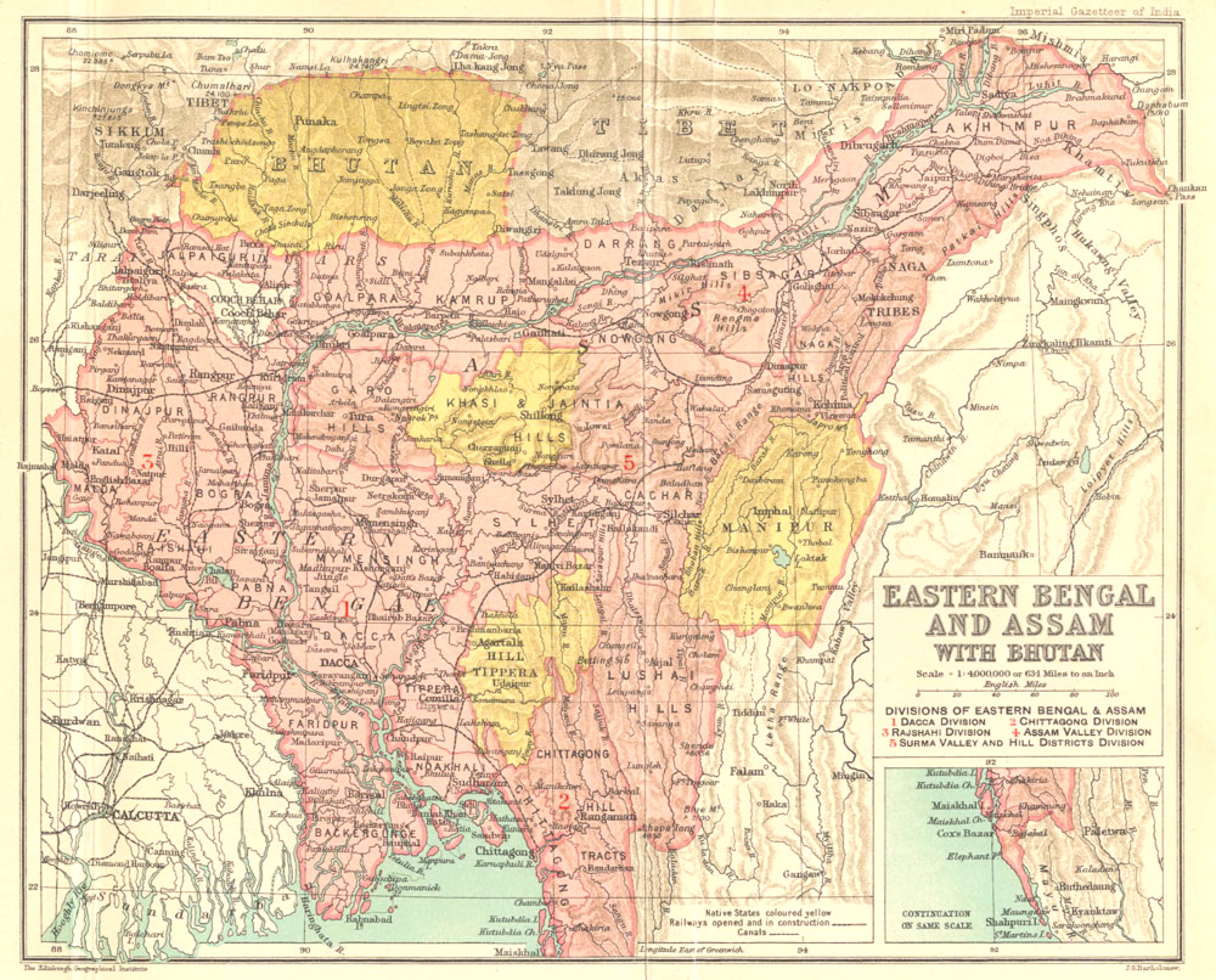|
Karbi Script
Karbi language is officially written in Roman script in Karbi Anglong and Dima Hasao districts of Assam, Meghalaya and Arunachal Pradesh. However, in Kamrup district of Assam prefer mostly the Assamese script. History The written form of the Karbi language has been in development since the time of British rule in India when missionaries published the first Karbi newspaper Birta in 1903, in English (Roman Script). Since then Karbi language is being written in both Purvi Nagari script and Roman script. The Karbi Lammet Amei (Apex body of Karbi language) earlier adopted the Assamese (Purvi Nagari) script to write the Karbi language, but later changed to Roman script. Research on Karbi script and language Since old days Karbi people has no written form. Karbis has passed their tradition orally from generation to generation. The new generations are trying to preserve them in written form, as well coining new words to compensate for missing word they have come across in new age. i.e.- ... [...More Info...] [...Related Items...] OR: [Wikipedia] [Google] [Baidu] |
Karbi Language
The Karbi language () is spoken by the Karbi (also known as Mikir or Arleng) people of Northeastern India. It belongs to the Sino-Tibetan language family, but its position is unclear. Grierson (1903) classified it under Naga languages, Shafer (1974) and Bradley (1997) classify the Mikir languages as an aberrant Kuki-Chin branch, but Thurgood (2003) leaves them unclassified within Sino-Tibetan. Blench and Post (2013) classify it as one of the most basal languages of the entire family. History Like most languages of Northeast India, Karbi writing system is based on Roman script, occasionally in Assamese script. The earliest written texts in Karbi were produced by Christian missionaries, in Roman script, especially by the American Baptist Mission and the Catholic Church. The missionaries brought out a newspaper in Karbi titled Birta in the year 1903, Rev. R.E. Neighbor's '' 'Vocabulary of English and Mikir, with Illustrative Sentences' '' published in 1878, which can be called ... [...More Info...] [...Related Items...] OR: [Wikipedia] [Google] [Baidu] |
Karbi Anglong District
Karbi Anglong district is one of the 34 administrative districts of Assam in India. Diphu is the administrative headquarter of the district. The district is administered by Karbi Anglong Autonomous Council according to the Sixth Schedule of the Constitution of India. Etymology The name "Karbi Anglong" is derived from Karbi language. The word ''Karbi'' is the name of indigenous tribe living in and around the region. The origin of the word ''Karbi'' is unknown. The tribe call themselves as Arleng, meaning "Humans." ''Anglong'' is homonym noun for Hills and Mountains. History Pre independence Prior to the pre-British rule in North East India, the territory of Karbi Anglong was never properly or scientifically demarcated; and it was also not a part of any properly established external government or kingdom. There could be some suppression and occupation here and there by their neighboring people groups or kingdoms, but there are no plausible historical evidences to support the ... [...More Info...] [...Related Items...] OR: [Wikipedia] [Google] [Baidu] |
Assam
Assam (; ) is a state in northeastern India, south of the eastern Himalayas along the Brahmaputra and Barak River valleys. Assam covers an area of . The state is bordered by Bhutan and Arunachal Pradesh to the north; Nagaland and Manipur to the east; Meghalaya, Tripura, Mizoram and Bangladesh to the south; and West Bengal to the west via the Siliguri Corridor, a wide strip of land that connects the state to the rest of India. Assamese language, Assamese and Boro language (India), Boro are the official languages of Assam, while Bengali language, Bengali is an additional official language in the Barak Valley. Assam is known for Assam tea and Assam silk. The state was the first site for Oil well, oil drilling in Asia. Assam is home to the one-horned Indian rhinoceros, along with the wild water buffalo, pygmy hog, tiger and various species of Asiatic birds, and provides one of the last wild habitats for the Asian elephant. The Economy of Assam, Assamese economy is aided by w ... [...More Info...] [...Related Items...] OR: [Wikipedia] [Google] [Baidu] |
Meghalaya
Meghalaya (, or , meaning "abode of clouds"; from Sanskrit , "cloud" + , "abode") is a state in northeastern India. Meghalaya was formed on 21 January 1972 by carving out two districts from the state of Assam: (a) the United Khasi Hills and Jaintia Hills and (b) the Garo Hills.History of Meghalaya State Government of India Meghalaya was previously part of Assam, but on 21 January 1972, the districts of Khasi, Garo and Jaintia Hills became the new state of Meghalaya. The population of Meghalaya as of 2014 is estimated to be 3,211,474. Meghalaya covers an area of approximately 22,430 square kilometres, with a length-to-breadth ratio of about 3:1.Meghalaya IBEF, India (2013) T ... [...More Info...] [...Related Items...] OR: [Wikipedia] [Google] [Baidu] |
Arunachal Pradesh
Arunachal Pradesh (, ) is a state in Northeastern India. It was formed from the erstwhile North-East Frontier Agency (NEFA) region, and became a state on 20 February 1987. It borders the states of Assam and Nagaland to the south. It shares international borders with Bhutan in the west, Myanmar in the east, and a disputed border with China in the north at the McMahon Line. Itanagar is the state capital of Arunachal Pradesh. Arunachal Pradesh is the largest of the Seven Sister States of Northeast India by area. Arunachal Pradesh shares a 1,129 km border with China's Tibet Autonomous Region. As of the 2011 Census of India, Arunachal Pradesh has a population of 1,382,611 and an area of . It is an ethnically diverse state, with predominantly Monpa people in the west, Tani people in the centre, Mishmi and Tai people in the east, and Naga people in the southeast of the state. About 26 major tribes and 100 sub-tribes live in the state. The main tribes of the state a ... [...More Info...] [...Related Items...] OR: [Wikipedia] [Google] [Baidu] |
British Raj
The British Raj (; from Hindi language, Hindi ''rāj'': kingdom, realm, state, or empire) was the rule of the British The Crown, Crown on the Indian subcontinent; * * it is also called Crown rule in India, * * * * or Direct rule in India, * Quote: "Mill, who was himself employed by the British East India company from the age of seventeen until the British government assumed direct rule over India in 1858." * * and lasted from 1858 to 1947. * * The region under British control was commonly called India in contemporaneous usage and included areas directly administered by the United Kingdom of Great Britain and Ireland, United Kingdom, which were collectively called Presidencies and provinces of British India, British India, and areas ruled by indigenous rulers, but under British British paramountcy, paramountcy, called the princely states. The region was sometimes called the Indian Empire, though not officially. As ''India'', it was a founding member of the League of Nations, a ... [...More Info...] [...Related Items...] OR: [Wikipedia] [Google] [Baidu] |
Latin Script
The Latin script, also known as Roman script, is an alphabetic writing system based on the letters of the classical Latin alphabet, derived from a form of the Greek alphabet which was in use in the ancient Greece, Greek city of Cumae, in southern Italy (Magna Grecia). It was adopted by the Etruscan civilization, Etruscans and subsequently by the Ancient Rome, Romans. Several Latin-script alphabets exist, which differ in graphemes, collation and phonetic values from the classical Latin alphabet. The Latin script is the basis of the International Phonetic Alphabet, and the 26 most widespread letters are the letters contained in the ISO basic Latin alphabet. Latin script is the basis for the largest number of alphabets of any writing system and is the List of writing systems by adoption, most widely adopted writing system in the world. Latin script is used as the standard method of writing for most Western and Central, and some Eastern, European languages as well as many languages ... [...More Info...] [...Related Items...] OR: [Wikipedia] [Google] [Baidu] |



.jpg)
